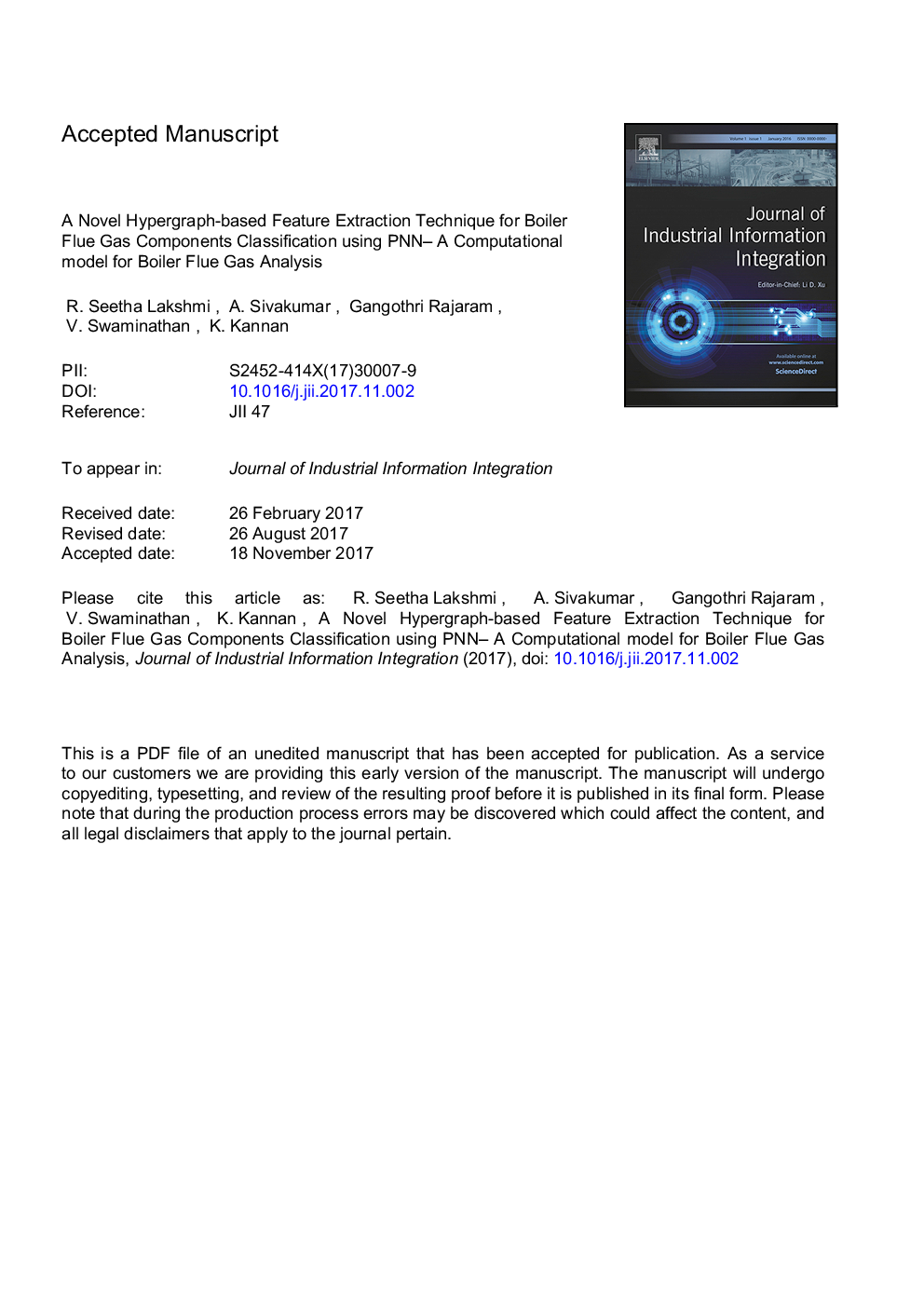| Article ID | Journal | Published Year | Pages | File Type |
|---|---|---|---|---|
| 6950096 | Journal of Industrial Information Integration | 2018 | 26 Pages |
Abstract
Mathematical programming is an art that provides precise techniques for solving a class of problems. Many industrial problems require Discrete Mathematical (DM) structures with which techniques can be developed to solve many well-posed problems. Hypergraph is one such DM tool which can address essential parts of intelligent computing in many industrial problems, the importance due to the need for accruing data from a sensor like devices for further analysis especially in applications such as boiler flue gas analysis, safety engineering etc. Various data classification schemes involve feature extraction techniques that provide intelligent measures to take an appropriate decision based on machine intelligence and hence Feature extraction from in Boiler Flue Gases (BFG) can be considered as an Industrial Information Integration research problem. A wide variety of feature extraction techniques has been reported to literature. But not many classifiers that exploit geometrical and topological features of the database have been utilized to design computationally efficient classifiers. In this paper, a Hypergraph (HG)-based feature extraction technique is developed in order to derive both topological and geometrical features through hyperedges that describe n-ary relations among the data containing feature vectors. These HG features obtained using Helly property of HG, have then been utilized to train a PNN (HGPNN) to classify the frequency responses of the sensors which can correspond to various mass concentrations of flue gas by detecting the nonlinearity. The classification capability of this HGPNN has been validated with the VOC benchmark data set. The classification capability of the proposed HGPNN has been analyzed first for the flue gas data acquired from ORSAT analyzer and then for the data from KANE® analyzer.
Related Topics
Physical Sciences and Engineering
Computer Science
Information Systems
Authors
R. Seetha Lakshmi, A. Sivakumar, Gangothri Rajaram, V. Swaminathan, K. Kannan,
